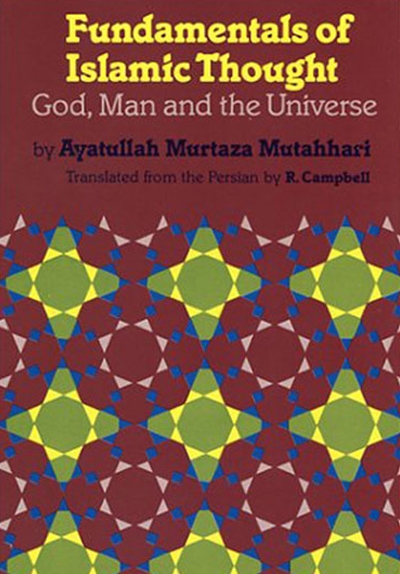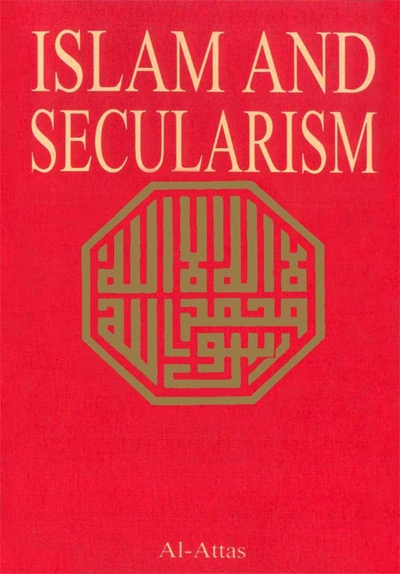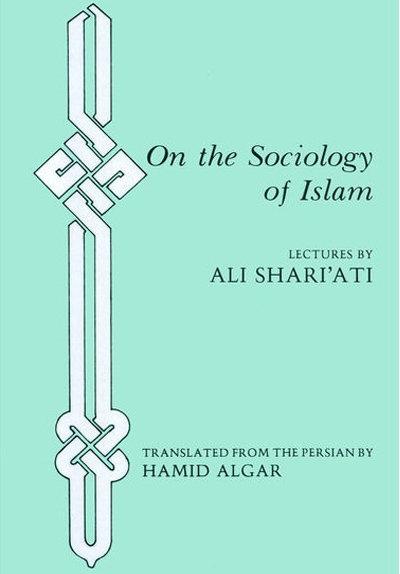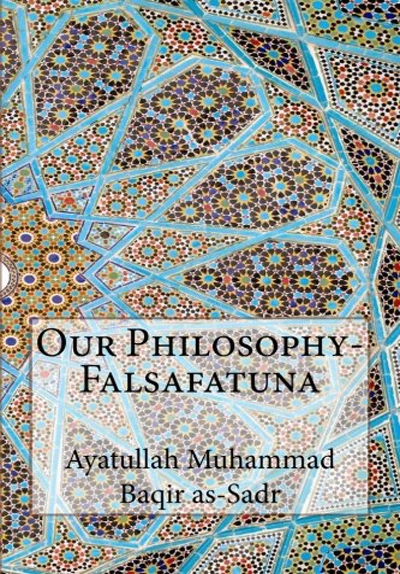Basic Principles of the Islamic Worldview
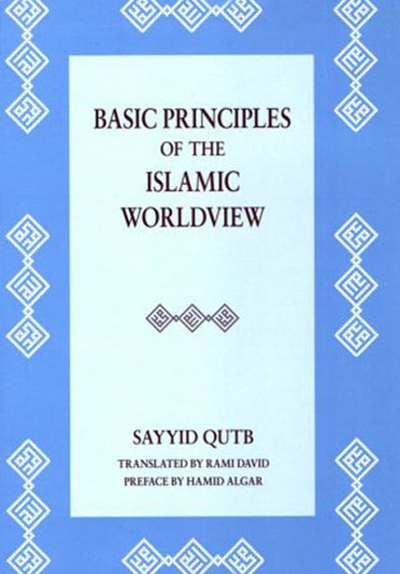
Author(s): Sayyid Qutb
Publisher: Islamic Publications International
Published on: Sha'ban, 1424 2003-09
ISBN: 1-889999-34-2, 1-889999-35-0
No. of Pages: xvii + 230
Preface
by Hamid Algar
Sayyid Qutb has long been recognized as one of the most influential writers and activists of the Arab world in the past fifty years.1 Although his career was cut short by execution at the hands of the regime of Abdel Nasser in 1966, he left behind an abundant body of work that continues to be studied and varyingly appreciated down to the present. Attention has been paid in particular to al-‘Adalat al-Ijtima’iyya fi ‘l-Islam (“Social Justice in Islam”), the first of his works to appear in English translation); Fi Zilal al-Qur’an (“In the Shade of the Qur’an”), a complete commentary on the Qur’an; and Ma’alim fi ‘t-Tariq (“Milestones”), a manifesto for change which, together with the flimsiest of forensic evidence, was used by the Egyptian government to serve as a pretext for his execution. Qutb saw himself above all, however, as a thinker called upon to articulate Islam in its purest, simplest, and most imperative form, to free it from the host of misconceptions, which, in his opinion, had obscured it for centuries, and several of his most important books were dedicated to that purpose. The book now presented to the reader in English translation is one such book; it may serve as a key to the understanding of some of his better known writings.
The text entitled Khasa’is at-Tasawwur al-Islami wa Muqawwimatuhu (“The Characteristics and Fundamentals of the Islamic Concept”) is said to have been first published in either 1960 or 1962, at a time when its author was in jail.2 The printing used for this translation is described on the frontispiece as the “ninth legitimate edition” (Dar al-Shuruq, Beirut and Cairo, 2000), “legitimate” in that it has been authorized by Sayyid Qutb’s heirs and is not a pirate edition. Several of Qutb’s works, above all al-‘Adalat al-ljtima’iyya fi ‘l-lslam, changed significantly in content from one edition to the next, and short of locating a copy of the 1960 or 1962 edition of Khasa’is and comparing it with the ninth, it is impossible to tell whether changes were ever made between the first edition and any of its successors. Probably, however, the text did not undergo any major revision, for it was intended as the first in a two-part series, and Sayyid Qutb spent part of the time left to him in completing the sequel, Muqawwimat al-Tasawwur al-lslami (“The Fundamentals of the Islamic Concept” ). At numerous points in the Khasa’is, where he senses, perhaps, that he has not dealt with matters in adequate detail, he refers the reader precisely to his forthcoming Muqawwimat for a fuller discussion of the topic in question; it is therefore unlikely that he should have thought it necessary to rework the Khasa’is. As for the Muqawwimat, he was unable to finish writing it before his execution, and it was not until 1986 that his brother, Muhammad Qutb, published the five chapters that were complete together with his notes for two final chapters, prefacing the book with a lengthy introduction. The work entitled Khasa’is at-Tasawwur al lslami wa Muqawwimatuhu (“The Characteristics and Fundamentals of the Islamic Concept”), both in the first and in the ninth edition, here offered in translation, deals in fact only with the “Characteristics,” not at all with the “Fundamentals” ; our retention of the title is simply a matter of fidelity to Sayyid Qutb’s choice.
It has often been remarked by admirers and detractors alike that Sayyid Qutb was not a scholar of Islam, an ‘alim, in the formal and traditional sense. From his point of view, this was an advantage, in that it enabled him, he believed, to encounter the Qur’an directly, free of the extraneous elements that had come to cloud Islamic scholarship over the centuries. He was particularly critical of the philosophical tradition represented by such luminaries as Ibn Sina and Farabi, denying it the attribute of “Islamic” because of its obvious debt to the Greeks, whose concepts, he rightly remarked, were indelibly marked by mythology. Scholastic theology (kalam) was hardly preferable, for it, too, bore the signs of external influence and caused the Muslims to dissipate their energies on vain and arcane matters. The correct understanding of the Qur’an and, as he put it, the “Islamic concept” was dependent on engagement in struggle and effort to create the society mandated by revelation. This had been the case with the first generation of Muslims, whom Qutb idealized to a unprecedented extent and effectively exempted from all the complexities of history, both before and after. Then, as a result of the conquests, Muslims began to make contact with other cultures, and the contamination set in. One might well ask why Islamic civilization, at such an early and vigorous period in its history, was so easily contaminated, and how it might shake off the consequences at a time when its resources are far fewer. These questions remained unasked by Sayyid Qutb. His urgent concern was rather to reconstitute, after a more than millennial lapse, the environment of struggle in which the revelation had first been received and to achieve thereby a new, exemplary era, mirroring the first. This concern accounts for the hortatory and insistent tone, often involving the repetition of one and the same sentence in a single paragraph, which pervades the whole book.
The present work should, then, be read as a document of struggle, not of theological or historical analysis. This feature serves to explain, perhaps, a curious and even paradoxical feature of the book: that while ostensibly devoted to expounding the thoroughly unique features of the Islamic revelation, it accords a great deal of space to the refutation of a wide array of religions and philosophies. Such attention to what-is not-Islam while setting forth what-is-Islam is not, of course, peculiar to Sayyid Qutb. All too many works by modern Muslim writers, ‘ulama for the most part excepted, give the impression of having been written with the awareness of a censorious Westerner peering over the shoulder of the writer. Insofar as the works in question function as a counteroffensive against current or traditional Western attitudes and criticisms of Islam, the practice of blending the exposition of Islam with the refutation of contemporary ideologies is understandable. The range of targets addressed by Sayyid Qutb is, however, unusually broad—Judaism, Christianity, Brahmanism, Zoroastrianism, many schools of philosophy, both ancient and modern, Marxism, Darwinism—all come under his rubric of “debris”, and in some cases they receive greater analytical attention than the characteristics of Islam that form the subject matter of each chapter. Those characteristics are spelled out only in the most general terms, to the accompaniment of relevant Qur’anic verses cited without interpretation or comment. Particularly remarkable is that the exposition of the scope of tawhid, placed for some reason at the very end of the book, is preceded by a critique of Brahmanism (in terms virtually identical to those used earlier in the text). Platonism and even the para-monotheistic cult of Iton in Pharaonic Egypt. It is as if the veritable uniqueness of Islam can be seen only by way of stark contrast with all that preceded and followed it.
It has been correctly remarked that Sayyid Qutb for the most part lacked—or at least failed to demonstrate—direct textual acquaintance with the traditions and philosophies he criticized.3 The principal sources on which he drew for the purpose were Allah, a work by his longtime associate, the litterateur Mahmud ‘Abbas al-‘Aqqad (d.l964), and al-Fikr al-lslami al-Hadith wa Silatuhu bi ‘l-lsti’mar al-Gharbi (“Modern Islamic Thought and Its Relation to Western Imperialism”) by Muhammad al-Bahi. He also made use of writings by Abu ‘1-A’la Mawdudi (d. 1979), Abu ‘1-Hasan Nadwi (d. 1999), and Muhammad Asad (d. 1992), regularly identified as “the former Leopold Weiss” in order to highlight his status as an eminent convert. Sayyid Qutb’s lack of access to original sources and dependence on works which already carried a polemical intent definitely placed him at a disadvantage, although he cannot for the most part be said to have distorted the creeds and philosophies he reviews.
A more serious problem is, perhaps, that he occasionally disregarded his own chosen methodology, defined negatively as the avoidance of themes, emphases and terms alien to Islam and its own distinctive vocabulary. He criticizes two of his predecessors, Muhammad ‘Abduh (d. 1905) and Muhammad Iqbal (d. 1938), for doing precisely that. He correctly remarks of the former that as a reaction to Western polemics against Islam as a passive and fatalistic creed, he has attempted to make reason the judge of revelation, and of the latter, that under the influence of Nietzsche he has massively exaggerated the role of the ego. Sayyid Qutb’s own use of terms such as “positivism” (al-ijabiyya) and “realism” (al-waqi’iyya) to describe characteristics of the Islamic concept also represents, however, a terminological borrowing from an alien vocabulary. It seems that he was aware of this himself, for in the case of “realism” he found it necessary to append a footnote clarifying the sense in which he used the word and distancing himself from other senses. Similarly, his proclamation that the establishment of a truly Islamic society will result in “the liberation of man” and “the birth of man” owes little to the terminology of the Qur’an and much to the ideological climate in which the book was written. Most significant of all is the key word in the title, tasawwur (“concept”), the unmistakable lexical sense of which is an idea, something formed in the mind. Sayyid Qutb’s reliance on it throughout the work as his organizing theme is at odds with the “divine nature” (rabbaniya) which he correctly emphasizes as a leading feature of Islam; something possessing divine nature can hardly be a mental construct. What is underway here is clearly the construction of an Islamic ideology (not that Qutb himself ever, to my knowledge, used that word).
None of the foregoing is intended to invalidate the substance of what Sayyid Qutb puts forth in his book, but only to clarify the purposes for which he wrote it, the method he espoused, and the climate of struggle which he both experienced and aspired to cultivate. For whatever else may be said about the man and his work, he remained utterly faithful to his central belief: that proper comprehension of the “Islamic concept” depends on living out its implications in the actuality of existence, individual and collective. To this, he bore powerful testimony with his pen and his life.
In the aftermath of 9/11, a malodorous flood of pseudo-scholarly writing on Islam, “Islamism,” “political Islam,” “Islamic extremism,” “Islamic fundamentalism,” etc. has gushed forth across America, in such proportions that one might imagine there to be one expert on Islamic and Middle Eastern affairs per hundred head of the population. This body of literature, to use the word loosely, is in many ways heir to the musings of British, French and Russian scholar-imperialists in earlier times on the wellsprings of “Mohammadan fanaticism” and to their search for a single, malevolent source of their troubles. And according to several of the freshly minted experts with whom we are blessed, none other than Sayyid Qutb is the villain of the age. To the plaintive question, “Why do they hate us?” we now have an answer: “Because Sayyid Qutb told them to.
The campaign against him began as early as the fall of 2001 but picked up steam with a piece published in the New York Times Magazine on March 23, 2003, “Al-Qaeda’s Philosopher: How an Egyptian Islamist Invented the Terrorist Jihad from his Jail Cell,” by a certain Paul Berman. This was yellow journalism at its most lurid, both literally and figuratively, literally in the sense that the front cover of the magazine bore a picture of Sayyid Qutb composed of alternating dots of yellow and black, for no apparent aesthetic purpose. The attempt to merge Osama bin Laden with Sayyid Qutb continued on the inside with a picture of bin Laden superimposed on a page from Sayyid Qutb’s Qur’an commentary, Fi Zilal al-Qur’an, and another, showing the blackened silhouette of a fighter taking aim, similarly mounted on a page from that work. The heading to the article promised that it would show how “the roots of al-Qaeda are not in poverty or in anti-Americanism but in Sayyid Qutb’s ideas about how Christianity went wrong and how martyrdom could change the world.” In fact, it failed to show any line of filiation from Sayyid Qutb, who died in 1966, to al-Qa’ida, which emerged in the 1980’s; the mere fact that while in Saudi Arabia bin Laden is said to have studied with Muhammad Qutb, the brother of Sayyid Qutb, is hardly decisive. Neither Sayyid Qutb nor his brother advocated at any point the indiscriminate slaughter of civilians, nor are the intellectual, cultural and social concerns Sayyid Qutb manifested in many of his works reflected in the published communiques of al-Qa’ida. True, both men speak of Crusaders and Zionists as enemies of Islam, but this cannot be dismissed as a fantasy originating in either or both of their minds, given the fervid support of Evangelical Christians for the invasions of Iraq and Afghanistan, the ugly manifestations of Islamophobia in and around both of those wars, and the apocalyptic fantasies of the Christian Zionists.
Berman’s article was the prelude to a book that appeared later in the year. Terror and Liberalism, fully fifty pages of which were devoted to Sayyid Qutb. Again Sayyid Qutb’s largely unhappy sojourn in Greeley, Colorado, was portrayed as important for his growing disdain for the West, and this disdain, Berman suggests, was magnified several decades later into murderous form by al-Qa’ida: the reader might almost conclude that had Sayyid Qutb not witnessed dancing he regarded as lascivious in the church halls of Greeley back in the 1940’s, the Twin Towers might still be standing. All that Berman can muster by way of evidence for his thesis is that bin Laden’s “presentation of political issues” is made “in a spirit close to Qutb’s theology of the absolute,” and that his analysis of the world is comparable to the depiction of Medina in the time of the Prophet made by Sayyid Qutb in Fi Zilal al-Qur’an.4 Running through the book like a thread is the insistence that Sayyid Qutb and other troublesome Arabs and Muslims were formatively influenced by Nazism and Fascism; hence the irreducible clash between the “terror” they espoused and the “liberalism” so dear to Berman’s heart.5 His understanding of “liberalism” can be gauged from his benign conjoining of United States influence in Pahlavi Iran with “liberal civilization.”6 Imperialism is completely absent from Berman’s purview, and Zionism is close to flawless; he even finds something to admire in the murderous Israeli assault on Jenin.7
A similar tack is taken by Ian Buruma and Avishai Margalit in an opuscule entitled Occidentalism: The West in the Eyes of its Enemies (New York, 2004). Here Sayyid Qutb and his real or imaginary cohorts are presented as retrograde enemies of the modern urban civilization of the West, lusting destructively after an unattainable alternative and sharing with pre-World War Two Japan a fascination with the ideas of extreme German nationalism.8 A year later, Stephen Schwartz, an ex-Spartacist who migrated to neo-conservatism via a stint as a pseudo-Sufi, guided throughout by the Zionist lodestar, added his voice to the cacophony with a tome entitled The Two Faces of Islam. Here, the main emphasis is on Wahhabism as the source of all evil, but Sayyid Qutb also comes in for the condemnation that was by now becoming obligatory. Sayyid Qutb, Schwartz impudently intoned, “never grew beyond the mental horizon of an isolated and impoverished peasant,” but his “hostility to the West expressed itself in an exaltation of his concept of jihad. This jihad embodied a guerilla ethos of radical assault, from below, on Western societies.9 What precisely is meant by “from below” is unclear, but somewhat later Schwartz managed a slightly greater degree of coherence; “Wahhabi intolerance, metastasized through Mawdudi and Sayyid Qutb,” led to the rise of “Islamic terrorism.”10 His case thus stated although entirely unproven, Schwartz confidently speculated that Sayyid Qutb “would likely have been proud of bin Laden.”11
In view of these precedents, it is not surprising that the The 9/11 Commission Report, while signally failing to answer a host of questions concerning that tragic day, was able sagely to pinpoint Sayyid Qutb as a source of inspiration for bin Laden, who, we are informed, “relies heavily” on him. For Sayyid Qutb, the report asserts, those Muslims who rejected his vision of an ideal Islamic society were like “nonbelievers worthy of destruction.”12 None of the sources adduced in the three footnotes to the relevant sentences of the report bear out these contentions.
Two other recent authors, Haneef James Oliver and Natania Long-Bas, also portray Sayyid Qutb as the ultimate source of inspiration for al-Qa’ida and all its murderous activities.13 Their vantage point is, however, diametrically opposed to that of the writers reviewed above, for unlike Schwartz who condemns Sayyid Qutb as an agent of Wahhabi metastasis, they disconnect him from Wahhabism and thereby seek to exculpate that creed from even remote and general responsibility for 9/11 and, indeed, much else besides. In a sense, they are correct: for better or for worse, Qutb was an original thinker and owed little if anything to Wahhabism, although his conviction that Islamic history had for long been perverted was not entirely dissimilar to one of Muhammad ibn ‘Abd al-Wahhab’s basic contentions. As for Wahhabi responsibility for 9/11 or more generally the activities of al-Qa’ida, the most that can reasonably be said is that Osama bin Laden came from a Wahhabi background, and that some Wahhabi preachers glorified the attack on New York; others, closer to the royal family, condemned it, as Oliver points out.14 Moreover, as he does not point out, Wahhabi violence has traditionally been directed against Muslims, not against non-Muslims.
Oliver’s evidence for the ideological dependence of al-Qa’ida on Sayyid Qutb consists mostly of ill-informed articles appearing in the same Western newspapers that he otherwise excoriates for their attacks on Wahhabism.15 Mirroring the professional anti-Wahhabis who label as Wahhabi all who arouse their displeasure, he maintains that “Qutbism” is a widespread and pernicious phenomenon, exemplified by groups and personages as diverse as Hamas, the Islamic Salvation Front of Algeria, ‘Ali Shari’ati of Iran, and the Saudi oppositionist groups led from London by Sa’d al-Faqih and Muhammad Mis’ari. These last are plainly the worst offenders, for they aim to displace the Saudi regime, a government which according to a communique approvingly cited by Oliver is “the only country that has Islamic legislation (even though it is not perfect) and is actually built upon the foundation of Tawheed (true monotheism).”16 For Oliver, all these variegated “Qutbists” are the “Khawaarij of the Era,” or alternatively a “wing of the Khawaarij.”17
The charge of neo-Kharijism stems from Sayyid Qutb’s condemnation of contemporary Muslim societies as jahili in light of their acceptance of non-Islamic laws, which is, however, a different matter from denouncing individual Muslims as non-believers and declaring their lives forfeit, as did the original Kharijites.18 Many centuries later, the Kharijite example was indeed resurrected, but by none other than the early Wahhabis, in their campaigns of slaughter in Arabia and beyond; the Ottoman authorities of the time accordingly saw fit to condemn them as neo-Kharijites. It is in any event one of the curiosities of our peculiar times that Wahhabis and anti-Wahhabis are in agreement on one point: the posthumous criminality of Sayyid Qutb.
Delong-Bas’s work is more temperate and scholarly in nature, if ultimately unconvincing. She portrays Muhammad ibn ‘Abd al-Wahhab as a careful exegete of the Qur’an, a gentle soul, thoughtfully concerned with preserving, or even advancing, the rights of women and much inclined to ecumenical harmony; if some later Wahhabis conducted themselves more ferociously, this cannot be laid at his doorstep. Indicting Sayyid Qutb rather than Wahhabism, in any of its forms or elements, as the source of bin Laden’s worldview and activities, Delong-Bas is obliged to admit that the Egyptian’s influence on him is not “stated directly,” and like Berman she can cite little more than the hardly decisive circumstance that bin Laden studied with Muhammad Qutb while in Saudi Arabia.19 In a further effort to distance bin Laden from Wahhabism with its hallmark dislike of Sufism, she suggests additionally that he came under “Sufi influence” while in Afghanistan, and Ayman al-Zawahiri, his close associate, is “a major Sufi shaykh.”20 However, a choice has to be made, for Sayyid Qutb is entirely unfavorable to Sufism: bin Laden cannot be both a Qutbist and a Sufi.21
It is time now to invite the reader to proceed to Sayyid Qutb’s text and to form his own estimate of the man, his thoughts, and his posthumous impact. The translation made by Rami David has been extensively revised to bring it into closer although not perfect, word-for-word alignment with the original; many of Sayyid Qutb’s repetitive phrases have been excised. For citations from the Qur’an, the translation of Muhammad Asad (The Message of the Qur’an, Gibraltar: Dar al-Andalus, 1980) has been used.
—Hamid Algar
Notes
- On the life of Sayyid Qutb, see the present writer’s introduction to Social Justice in Islam, revised translation by John B. Hardie (Oneonta, NY, 2000), pp. 1-17, and the sources cited there.
- For 1960, see Gilles Keppel, Muslim Extremism in Egypt (Berkeley and Los Angeles, 1985), p. 69; for 1962, see Shahrough Akhavi, “Sayyid Qutb: the Poverty of Philosophy and the Vindication of Islamic Tradition,” Serif Mardin, ed.. Cultural Transitions in the Middle East (Leiden, 1994), p. 131, n .l. It may not be irrelevant to note that Keppel, now trans-atlantically famed as an expert on “Islamism,” fails both to transliterate accurately and to translate correctly the title of Sayyid Qutb’s work.
- Akhavi, “Sayyid Qutb,” p. 132.
- Terror and Liberalism, pp. 116-118.
- As the present writer suggested in a rejoinder to Berman’s article, belatedly published in the New York Times Magazine on April 20, 2003, “ it is elsewhere in the contemporary Middle East that one might look for a closer analogue” with Fascists and Nazis. For some of the evidence, see Norman G. Finkelstein, Image and Reality of the Israel-Palestine Conflict (London and New York, 1995), pp. 88-120.
- Terror and Liberalism, p. 107.
- Terror and Liberalism, p. 136.
- Occidentalism, pp. 31-32, 117-121.
- The Two Faces of Islam, p. 134.
- The Two Faces of Islam, p. 178.
- The Two Faces of Islam, p. 182. Lest anyone doubt Schwartz’s credentials as a scholar of Islam, let us draw attention to his remarkable discovery that the Qur’an itself endorses or even mandates the Zionist project, a fact that has until now somehow eluded the attention of the entire Islamic umma (see pp. 19-20 of his book).
- The 9111 Commission Report (Washington DC, 2004), p. 51.
- Haneef James Oliver, The “Wahhabi” Myth: Dispelling Prevalent Fallacies and the Fictitious Link with Bin Laden, Toronto; The Reign of Islamic Da’wah Centre (sic), 2004; Natan a Delong-Bas; Wahhabi Islam: From Revival and Reform to Global Jihad, Oxford: Oxford University Press, 2004.
- For the supportive declarations see the present writer’s Wahhabism: A Critical Essay (Oneanta, NY, 2002), p. 66, and for a sample of the condemnations, Oliver, The “Wahhabi” Myth, p. 138
- Oliver, The “Wahhabi" Myth, pp. 18, 30-32. Among the luminaries he invokes is David Forte of the same National Review that opened its columns to the proposal that Mecca should be nuked.
- Oliver, The “Wahhabi Myth,” p. 40, n. 73.
- Oliver, The “Wahhabi” Myth, pp. 29, 37.
- In his introduction to Sayyid Qutb’s Muqawwimat al-Tasawwur al-lslami (Cairo, 1986), pp. 9 -12, Muhammad Qutb argues convincingly that his brother cannot be classified as a neo-Kharijite.
- Delong-Bas, Wahhabi Islam, pp. 273-274.
- Delong-Bas, Wahhabi Islam, p. 274.
- Oliver also suggests that Osama bin Laden is connected to Sufism, the conclusive evidence being that his family originated in the Hadaramawt, an area where Sufi traditions are strong (The “Wahhabi” Myth, pp. 15-16)
